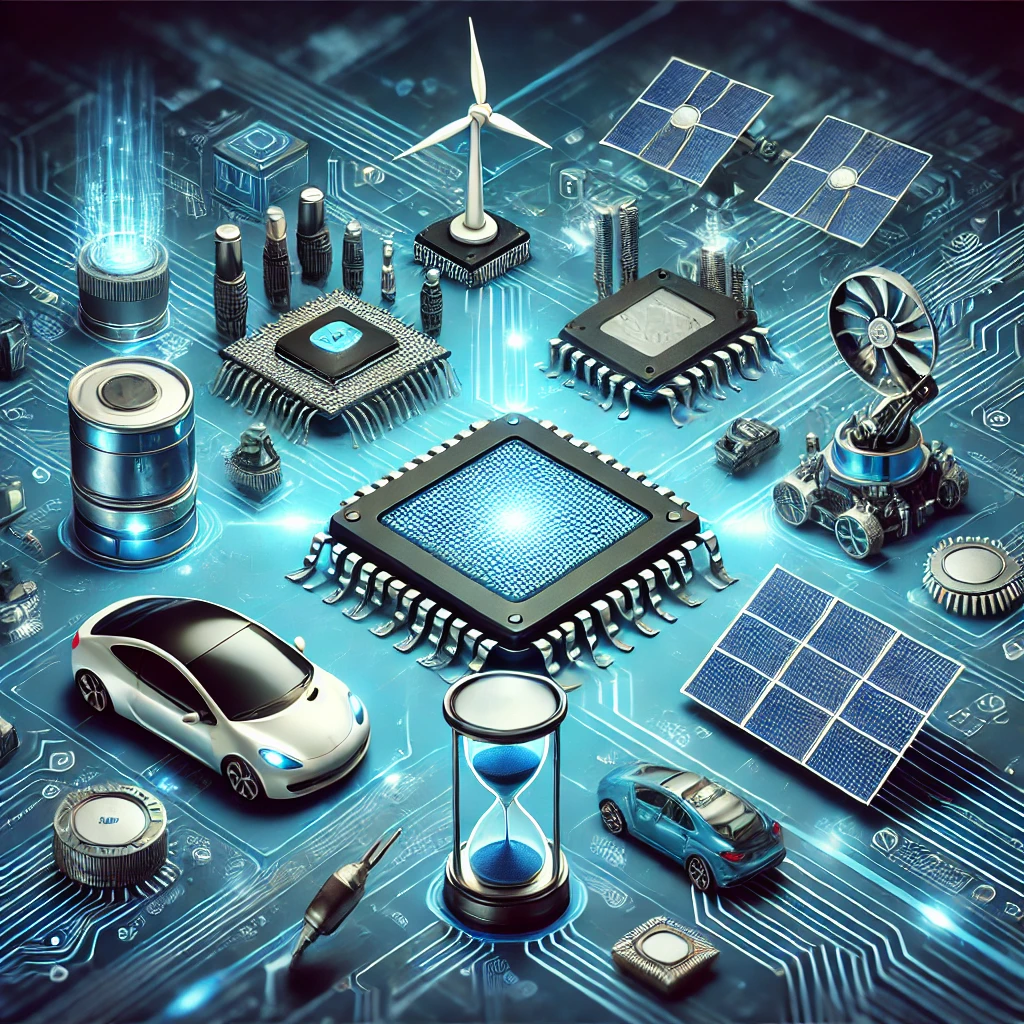Understanding Semiconductors: The Backbone of Technology
Semiconductors are materials that possess unique electrical properties, placing them between conductors and insulators in terms of their ability to conduct electricity. The most commonly used semiconductor materials are silicon and germanium. Unlike conductors, which allow electric currents to flow freely, or insulators, which resist flow, semiconductors can be manipulated to control the flow of electricity. This property is critical for a wide range of applications, from simple electronics to complex computing systems.
The development of semiconductors can be traced back to the early 20th century, with key discoveries laying the groundwork for modern technology. Notably, in 1947, John Bardeen, Walter Brattain, and William Shockley invented the bipolar junction transistor, a pivotal moment that revolutionized the field. This invention paved the way for the miniaturization of electronic devices and the creation of integrated circuits. As technology evolved, the 1970s marked the introduction of the microprocessor, further accelerating the reliance on semiconductors across various industries.
One of the defining characteristics of semiconductors is their ability to behave as either conductors or insulators depending on environmental conditions, such as temperature and the presence of impurities. This property enables the modulation of electric currents, which is essential for the operation of devices like diodes, transistors, and solar cells. Importantly, the manufacturing processes for semiconductor devices, such as doping and etching, have advanced significantly, allowing for the production of smaller, more efficient components.
Today, semiconductors form the backbone of nearly all modern technology. From smartphones and laptops to medical equipment and automotive systems, their influence is pervasive. By understanding the fundamental nature of semiconductors, we can better appreciate their profound impact on technological advancements and their integral role in shaping the future of innovation.
Key Applications of Semiconductors in Daily Life
Semiconductors have become integral components that permeate various aspects of modern life, significantly enhancing the performance and efficiency of numerous devices. One of the most notable applications of semiconductors is within smartphones. These handheld devices leverage semiconductors to perform an array of tasks, from running complex applications to facilitating seamless communication. The ability of semiconductors to manage power consumption elegantly allows smartphones to maintain longer battery life while running high-performance tasks, underscoring their crucial role in device functionality.
Computers also rely heavily on semiconductor technology. Central processing units (CPUs) and graphics processing units (GPUs) are vital components that utilize semiconductor materials to process information rapidly. The speed and energy efficiency offered by modern semiconductors allow for the execution of multiple processes simultaneously, which is essential in today’s fast-paced digital environment. Furthermore, advancements in semiconductor technology pave the way for innovations like artificial intelligence and machine learning, as these applications require powerful computational capabilities.
In addition to personal devices, household appliances have evolved to integrate semiconductors for improved functionality. Smart home devices, such as thermostats, lighting controls, and security systems, exploit semiconductor technology to enhance automation and energy efficiency. These advancements not only provide convenience but also contribute to sustainable living practices by minimizing energy consumption.
Semiconductors also play a pivotal role in entertainment systems, including televisions and gaming consoles. They enhance video and audio quality, providing users with immersive experiences. Furthermore, robust communication technologies such as the internet and mobile networks are heavily dependent on semiconductors, which enable fast and reliable data transmission. The interconnectedness provided by semiconductor devices is essential for maintaining the collaborative and dynamic nature of modern communication.
These exemplary applications illustrate the necessity of semiconductors in enriching daily life, showcasing not only their versatility but also their critical role in driving technological advancement.

The Role of Semiconductors in Emerging Technologies
Semiconductors play a critical role in the advancement of emerging technologies, acting as the backbone for innovation across various industries. As we navigate an increasingly digitized world, the demand for efficient power and processing capabilities is vital. Notably, fields such as artificial intelligence (AI), the Internet of Things (IoT), autonomous vehicles, and renewable energy solutions greatly benefit from the implementation of advanced semiconductor technologies.
In AI, semiconductors facilitate complex computations and data processing, enabling sophisticated algorithms to operate seamlessly. Processors tailored for AI applications, such as Graphics Processing Units (GPUs) and Tensor Processing Units (TPUs), harness the power of semiconductors to conduct parallel processing, significantly enhancing the efficiency of machine learning tasks. This advancement in AI relies heavily on the continuous improvement of semiconductor materials and architectures, which can handle large datasets and perform rapid calculations.
Similarly, the IoT ecosystem relies extensively on semiconductors to connect an array of devices, ranging from everyday appliances to industrial machinery. Semiconductors enable sensors and communication modules to collect, transmit, and analyze data in real-time. Technologies such as System-on-Chip (SoC) designs encapsulate multiple functionalities into a single chip, optimizing both performance and energy efficiency. This interconnectivity facilitated by semiconductors paves the way for smarter cities and environments.
More
In the automotive sector, semiconductors are crucial for the development of autonomous vehicles. They support advanced driver-assistance systems (ADAS), allowing vehicles to process environmental data and make informed decisions. Microcontrollers and sensors serve as the neural network of these vehicles, showcasing the intricate relationship between semiconductor technology and road safety.
Lastly, the transition to renewable energy sources is also supported by innovations in semiconductor technology. Solar inverters, battery management systems, and electric vehicle chargers utilize specialized semiconductors that enhance the efficiency and performance of renewable energy systems. As we continue to strive for sustainability, the role of semiconductors becomes increasingly significant in optimizing energy conversion and utilization.
In conclusion, the integration and advancement of semiconductor technologies are fundamental to the evolution of emerging technologies, emphasizing their pivotal role in shaping the future of numerous industries.
Challenges and Future Directions in the Semiconductor Industry
The semiconductor industry, integral to modern technology, is currently grappling with several challenges that could significantly impact its future. One major issue is supply chain disruptions, exacerbated by global events, including the COVID-19 pandemic. This has led to a shortfall of critical components, forcing manufacturers to reassess their dependency on a limited number of suppliers. In parallel, resource limitations, such as the scarcity of essential raw materials and the increasing costs associated with extraction and processing, compound these supply chain issues. As demand for semiconductors surges across various sectors, including automotive, consumer electronics, and communications, the struggle to maintain a steady production flow becomes ever more pronounced.
On the global stage, competition within the semiconductor industry is intensifying. Countries are investing heavily in chip production capabilities to assert technological dominance. This geopolitical factor further complicates supply chain dynamics, as trade restrictions and tariffs can hinder the movement of semiconductor products. Amid this complex landscape, companies and governments are actively seeking solutions to mitigate these challenges. Advances in manufacturing processes, such as the development of more efficient fabrication techniques, are being prioritised. Techniques like extreme ultraviolet lithography (EUV) are seen as pivotal in enhancing production yields and enabling the creation of smaller, more powerful chips.
Conclusion
Looking towards the future, trends such as miniaturization and increased efficiency are anticipated to reshape the semiconductor landscape. As technology continues to evolve rapidly, the necessity for innovation remains paramount. The integration of new materials, such as graphene and silicon carbide, offers promising alternatives to traditional silicon-based semiconductors, potentially leading to significant performance improvements. The adoption of these advanced materials could catalyse the next wave of technological advancements, ensuring that the semiconductor industry continues to meet the demands of an increasingly digital world. In conclusion, addressing these challenges while embracing innovation will be key to sustaining growth in the semiconductor sector.
Read Our Latest Blog
Practical Applications of Modern Physics in Everyday Life
Phone Number: +91-7488456170
Email ID: abhishek@eepl.me
Our Platforms:
Digilearn Cloud
EEPL Test
Live Emancipation
Follow Us on Social Media:
Instagram – EEPL Classroom
Facebook – EEPL Classroom
Stay connected and keep learning with EEPL Classroom!









